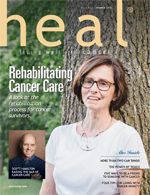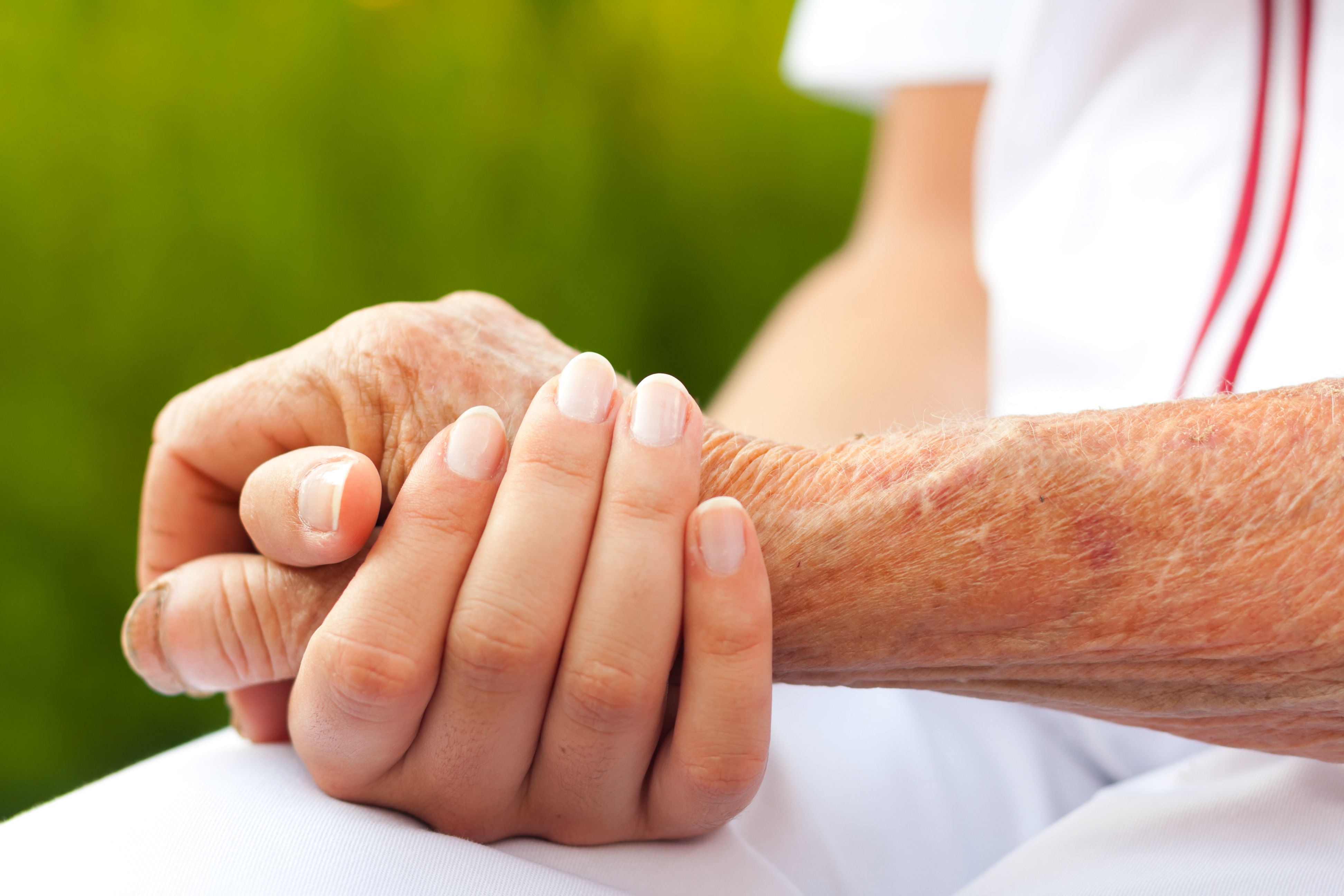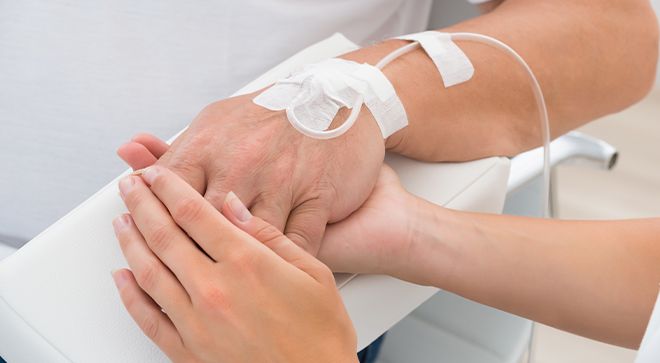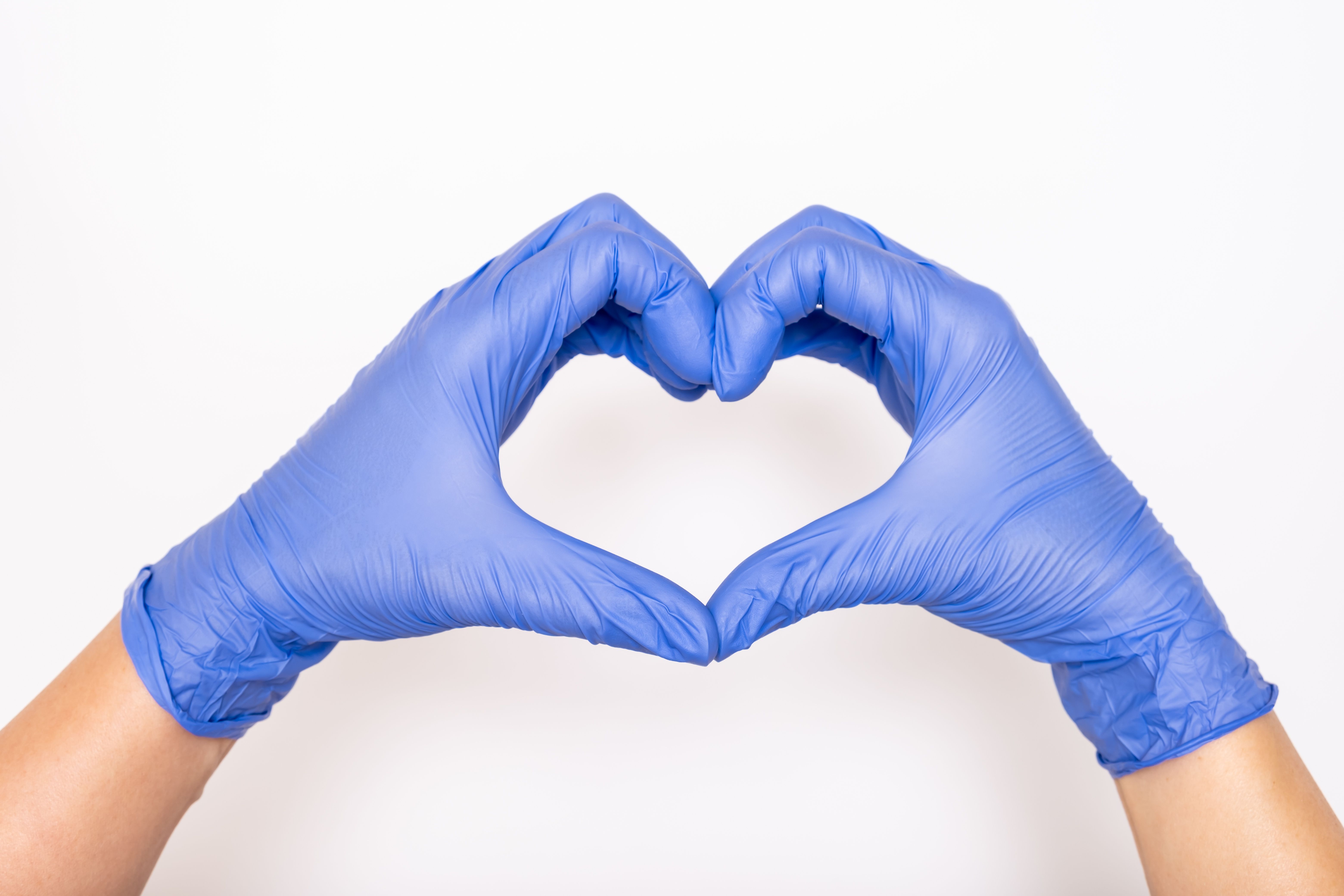Publication
Article
Heal
Survivor and Gold Medalist Scott Hamilton Works to Raise the Bar of Cancer Treatment
Author(s):
After losing his mother to breast cancer and then fighting testicular cancer himself, Olympic gold medalist Scott Hamilton started a foundation to help those touched by the disease.
PHOTO BY MICHAEL GOMEZ PHOTOGRAPHY

PHOTO BY MICHAEL GOMEZ PHOTOGRAPHY
Figure skater Scott Hamilton is perhaps best known for his signature backflip—a difficult move that few others can execute on ice.
But while the Olympic gold medalist has spent much of his career turning himself upside down, he now aims to turn cancer upside down. After losing his mother to breast cancer in 1977 and surviving his own battle with testicular cancer in 1997, Hamilton started the Scott Hamilton CARES Foundation, which is dedicated to funding world-class research and quality care to improve cancer survivorship. The logo for his foundation, an upside down ribbon, is a nod to his backflip and, more importantly, his goal to reverse the trajectory of cancer.
“I want to get enough information out there so when people are diagnosed with cancer, they can educate themselves and find out what is going on and not just be scared that they are going to die. I want people to know how to get treatment in the best way possible, not just the first way possible.”
Hamilton shared these guiding principles for his advocacy work and commitment to innovation at a recent launch event for Hengrui Therapeutics, where he was keynote speaker. Hengrui Therapeutics, a new Princeton-based biopharmaceutical company, is developing and commercializing oncology agents.
“We need to try and get behind people that have great ideas to make it better for the next person,” he said. “As a patient and a survivor, it is the greatest feeling in the world to know that there are innovative people that want to change the world and save lives.”
Hamilton is also responsible for the 4th Angel Mentoring Program, which brings patients together with survivors of the same cancer, and ChemoCare.com, a resource for those undergoing chemotherapy. He is working to expand the use of proton therapy, a type of radiation treatment that uses protons rather than traditional radiation to treat cancer. Construction of the first Scott Hamilton Proton Therapy Center is expected to start this summer in Franklin, Tennessee, where Hamilton currently resides.
Finding His Inspiration
Hamilton has always been determined to overcome adversity. As a young child, he spontaneously stopped growing, his stomach became ascended and he lost muscle development. He spent four years in and out of hospitals, but doctors could not determine what was wrong with him.
It was ice skating that finally helped him to heal.
“One day I decided to go ice skating, and I found something that I really love to do,” said Hamilton. “I practiced and practiced and pretty soon I was skating as well as the well kids, even though I was still very sick. Then I was skating as well as the best athletes. I started to get better. Whatever the disease was it went away, and I started growing again; it was miraculous.”
It wasn’t until years later in 2004, after Hamilton had already beaten testicular cancer, that he was diagnosed with a benign, non-cancerous pituitary brain tumor thought to be linked to his childhood illness. He has since recovered following radiation and hormone replacement therapy.
From the moment Hamilton stepped on the ice, his parents supported his passion for figure skating, and despite their limited teachers’ salaries, paid for him to pursue it.
But the sport became too much of a luxury when his mom received her breast cancer diagnosis. Hamilton was 17 years old when his parents told him they would only be able to pay for him to skate for one more year. Hamilton, who was very close with his mother, understood completely.
“Up until that point, I was a habitual loser,” said Hamilton. “In my first National Championship, I fell five times and came in last. The next year, I came in last again. When my mother told me I had to quit skating, I was okay with stopping.”
But with the pressure off, something changed for Hamilton. With his mother sitting in the stands, her left breast recently removed and her head covered in a wig to hide her chemotherapy-induced baldness, Hamilton won the Junior National title.
The win caught the attention of Helen and Frank McLoraine, a wealthy couple that ran a figure skating scholarship program. They decided to sponsor his career going forward and paid for him to be coached by Carlo Fassi, the same man who coached Dorothy Hamill.
Finishing high school, Hamilton got an apartment and was on his own for the first time in his life. The newfound independence caused him to lose focus, he said, and he came in ninth place in his first competition at the senior level.
Unfortunately, that was the last time Hamilton’s mother saw him skate, as she lost her battle with cancer shortly after. It was her death that pushed Hamilton to get back on track in his career.
“When she died, I didn’t know how I could do any of this without her,” said Hamilton. “But then I realized that I could just bring her with me wherever I went. I could live for her and be accountable to her and be the person she always thought I could be. From then on, everything changed.”
Just a few short years later, Hamilton qualified for the 1980 Olympics, where he was chosen to carry the U.S. flag in the opening ceremony and came in fifth. In 1984, he went back again, this time winning the gold medal.
Fighting His Own Battle
It would be almost 20 years exactly after his mother passed that Hamilton would face his own battle with testicular cancer. At first, when he got the diagnosis he was terrified.
“This was the disease that took my Mom from me and now I had it,” he said.
But he quickly drew inspiration from his mother’s positive attitude. “I remembered my mom, who used to say ‘oh this chemotherapy is fine, I’ve always hated my hair and these wigs are so much easier’,” he said. “I remember how her prosthetic breast would pop out at the dinner table and we’d play hot potato with it to get it back to her and laugh with her.”
He decided then and there that he wasn’t going to take his cancer too seriously. At the Cleveland Clinic where he was treated, he told the doctors and nurses they weren’t allowed in his room unless they could make him laugh. So the nurses decorated his chemotherapy bags with stickers and cracked jokes as they administered his treatment.
“They treated me like an 8-year-old and it was awesome,” said Hamilton.
But as much as he wanted to, it wasn’t always easy to keep a positive attitude. “There was a feeling of betrayal, that my body betrayed me,” said Hamilton. “You lose a little bit of momentum because you just don’t know why your body did this.”
Desperate to understand, Hamilton went online to search for more information about the chemotherapy he was receiving. But the information he found wasn’t any help.
“It was written with 12-syllable words, sometimes three to a sentence,” he said. “That information wasn’t for me; it was for other physicians. It was medical journal language. I wanted to understand what my body was doing.”
The challenge inspired him to create Chemocare.com. The site includes information on each chemotherapy drug, its acronym and what it does, common side effects and how to manage them, exercise and nutrition information for patients undergoing chemotherapy, and much more. The site is written in simple language,, eighth-grade level English and Spanish, so that it is accessible to everyone. His goal was to get 3 million visits per year; today Chemocare. com sees 3 million visits per month and is rapidly growing.
In addition to the physical challenge of undergoing chemotherapy, Hamilton also struggled with the emotional challenges fighting cancer can bring.
“There is an isolation people feel,” he said. “I was the only one I knew that was going through cancer. That was tough. I thought, there needs to be someone to talk with people about this.” He created the 4th Angel Mentoring Program around the idea that every patient with cancer already has three angels in their life: their oncologist, their oncology nurse and their friends and family.
“There needed to be a 4th angel. The 4th angel is someone who has been there done that, has survived and is on the other side,” said Hamilton. “They can be your life coach and your role model. They are where you want to be.”
So far, patients have been linked with a survivor who has undergone the same cancer and treatment regimen that they have. The program is expanding so much that they may consider creating an algorithm to more efficiently match mentors/ mentees, said Hamilton.
Looking Toward the Future
The Scott Hamilton CARES Foundation also continues to expand. There are currently 820 trained and active patient/caregiver mentors, matching more than 100 requests each month. The foundation is currently focusing on initiatives that further early detection, immunotherapy and proton therapy. Hamilton is inspired by treatments that focus on killing the cancer with minimal impact on the rest of the body.
“I am here because of chemotherapy. I am grateful. But the statistics show that 20 years out, things start to happen; the late effects,” he said. “We need to raise the bar on cancer treatment options that are designed to specifically go after the cancer without destroying the rest of the body.”
Hamilton feels proton therapy is one technology that can achieve that goal. His Scott Hamilton Proton Therapy Center, a $109-million not-for-profit center developed with Provision Trust, Inc., will be open to all qualified and properly credentialed radiation oncologists, regardless of hospital affiliation. He hopes to open similar centers nationwide and to work with insurance companies to cover the service, as few currently do.
“I get frustrated that new technologies, new options and new ideas, are kind of getting squished by the status quo,” said Hamilton. “I feel like I need to do something about that.”
As a society, we need to make it easier for patients and their families to access the resources they need to understand and fight their cancer in the best way possible, said Hamilton. That is what he hopes to do with all of his initiatives.
“The more I learn, the more I know I need to learn, and the more I experience, the more I really want to roll up my sleeves and get to work,” said Hamilton. “The cancer community is really underserved. There are a lot of foundations out there, but we need to change the conversation. That is part of what we are trying to do. We want to align with people and raise an army. Let’s raise the bar.”





